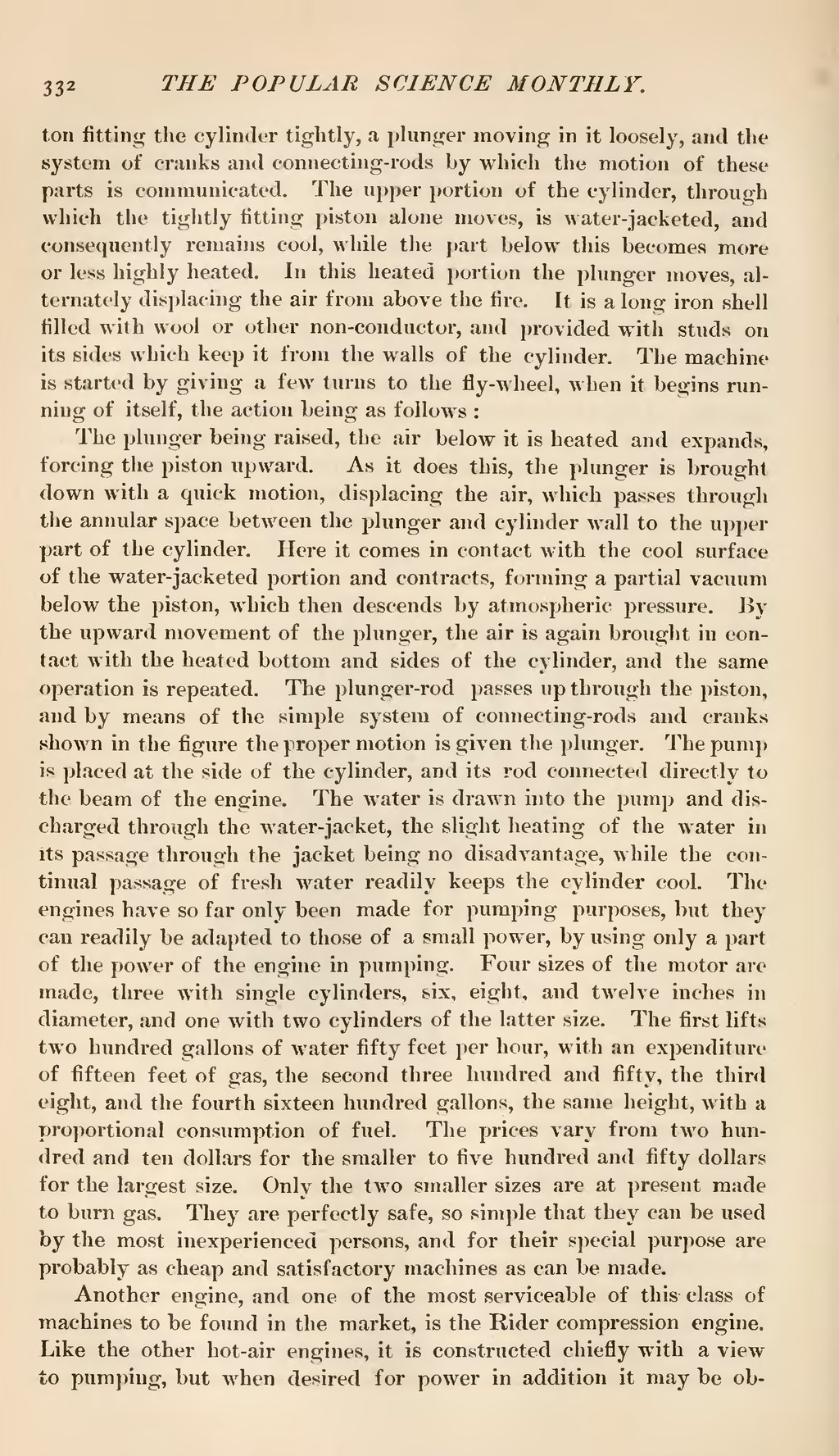ton fitting the cylinder tightly, a plunger moving in it loosely, and the system of cranks and connecting-rods by which the motion of these parts is communicated. The upper portion of the cylinder, through which the tightly fitting piston alone moves, is water-jacketed, and consequently remains cool, while the part below this becomes more or less highly heated. In this heated portion the plunger moves, alternately displacing the air from above the fire. It is a long iron shell filled with wool or other non-conductor, and provided with studs on its sides which keep it from the walls of the cylinder. The machine is started by giving a few turns to the fly-wheel, when it begins running of itself, the action being as follows:
The plunger being raised, the air below it is heated and expands, forcing the piston upward. As it does this, the plunger is brought down with a quick motion, displacing the air, which passes through the annular space between the plunger and cylinder wall to the upper part of the cylinder. Here it comes in contact with the cool surface of the water-jacketed portion and contracts, forming a partial vacuum below the piston, which then descends by atmospheric pressure. By the upward movement of the plunger, the air is again brought in contact with the heated bottom and sides of the cylinder, and the same operation is repeated. The plunger-rod passes up through the piston, and by means of the simple system of connecting-rods and cranks shown in the figure the proper motion is given the plunger. The pump is placed at the side of the cylinder, and its rod connected directly to the beam of the engine. The water is drawn into the pump and discharged through the water-jacket, the slight heating of the water in its passage through the jacket being no disadvantage, while the continual passage of fresh water readily keeps the cylinder cool. The engines have so far only been made for pumping purposes, but they can readily be adapted to those of a small power, by using only a part of the power of the engine in pumping. Four sizes of the motor are made, three with single cylinders, six, eight, and twelve inches in diameter, and one with two cylinders of the latter size. The first lifts two hundred gallons of water fifty feet per hour, with an expenditure of fifteen feet of gas, the second three hundred and fifty, the third eight, and the fourth sixteen hundred gallons, the same height, with a proportional consumption of fuel. The prices vary from two hundred and ten dollars for the smaller to five hundred and fifty dollars for the largest size. Only the two smaller sizes are at present made to burn gas. They are perfectly safe, so simple that they can be used by the most inexperienced persons, and for their special purpose are probably as cheap and satisfactory machines as can be made.
Another engine, and one of the most serviceable of this-class of machines to be found in the market, is the Rider compression engine. Like the other hot-air engines, it is constructed chiefly with a view to pumping, but when desired for power in addition it may be ob-
